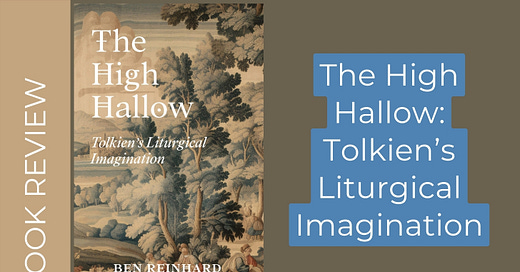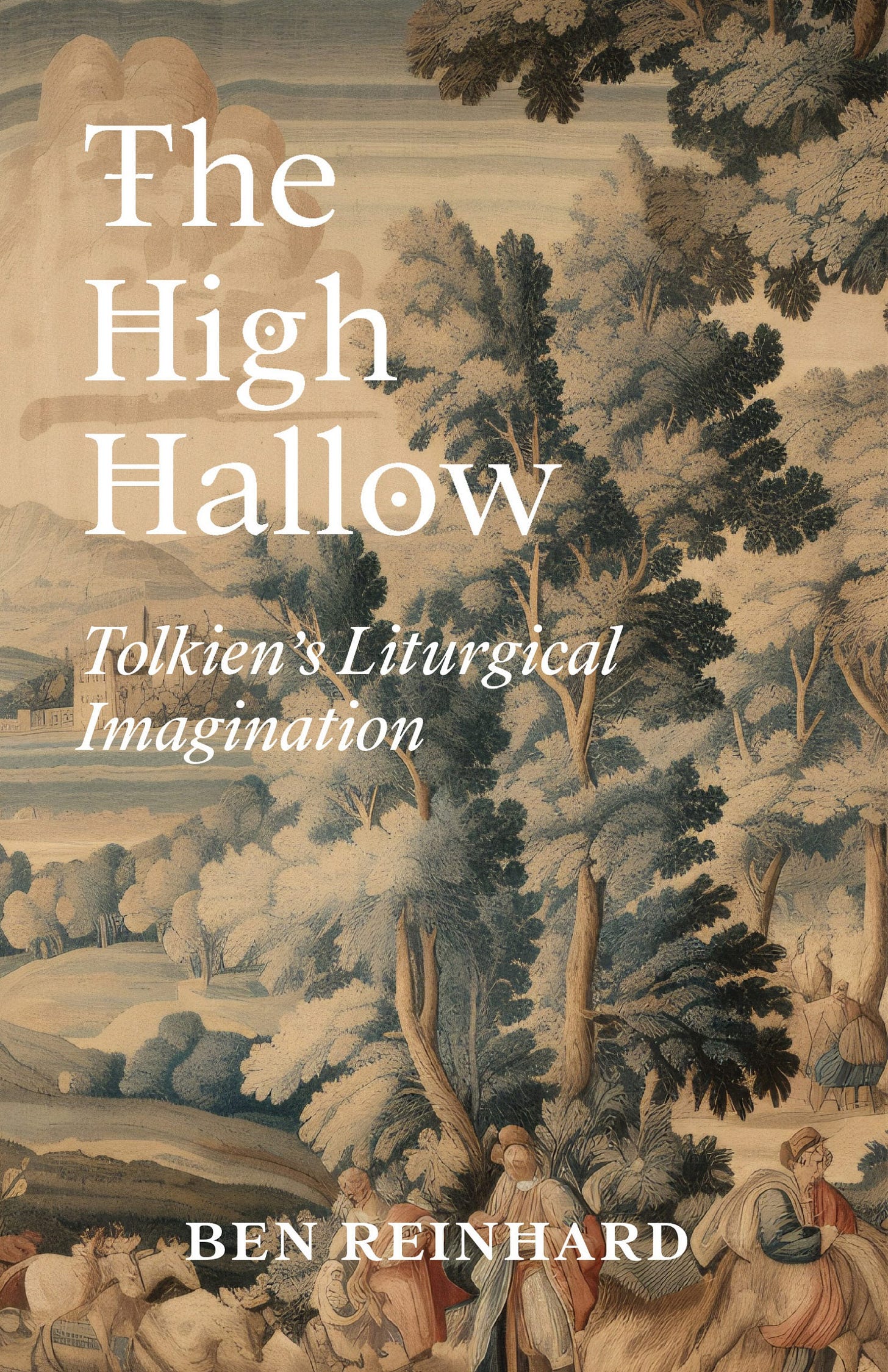Reading liturgical theology is a passion of mine. Even after the past few years of actively researching for my doctoral dissertation in liturgical theology, I just cannot get enough of it! The Mass is the source and the summit of the Christian life (cf. CCC 1324) and participation in the Sacred Mysteries consumes my daily thoughts. Even beyond my dissertation work, though, I have always been drawn to non-fiction. Besides Theology, History books about the Roman Empire, the American democratic experiment, and World War Two are high on my reading list. Apart from the occasional diversion, I am honestly remarkably bored by the prospect of reading fiction.
There are notable exceptions. Like almost every millennial man I know, I love the Inklings: Tolkien, Lewis, and Chesterton. Though, even with these British gents, I would rather read Abolition of Man than The Great Divorce and I would rather spend my time with Everlasting Man than Fr. Brown.
But then comes J.R.R. Tolkien. I re-read the Lord of the Rings Trilogy ever couple of years. My wife Bridget is an even bigger Tolkien fan than I am. She knows the Silmarillion better than anyone I know. I asked her for some fiction recommendations one night and she rattled off a few fantasy books she was reading with her sister… no, thanks. Then, I made a joke and said, “well, maybe not then. I’ll just read the Silmarillion again. But that’s non-fiction, isn’t it?” She replied, “It’s basically non-fiction.” It is humorous, but it is probably close to true.
I just finished reading The High Hallow: Tolkien’s Liturgical Imagination by Dr. Ben Reinhard, professor of English at Franciscan University of Steubenville, from Emmaus Road Publishing. It was phenomenal. I highly recommend picking up a copy! It was insightful and thought-provoking and my admiration and respect for Tolkien grew even more! I must say, though, I was drawn back to the conversation with my wife about fiction and non-fiction. Tolkien famously disliked allegory, but why do I see enough truth in his stories to think of them almost as non-fiction? Dr. Reinhard has hit the nail on the head: Tolkien in his world building is drawing on the cosmic liturgy. The mystery of creation, the fall, redemption, and the end of all things is not only represented in Tolkien’s work, it takes it as the foundation!
Over the course of this relatively short book, Dr. Reinhard explores Tolkien’s affinity for the Holy Mass, the interplay between Faerie stories and liturgy, and examines the liturgical patterns of the primary reality (our world) and their reflection in the secondary reality (the story). What Dr. Reinhard is able to do, quite successfully, is draw in two camps: those who have a love for the Catholic liturgy and those who love Tolkien and his stories. Both groups will leave better off for having read the book. For those, like me, who stand squarely in both camps, you will be giddy as you read Dr. Reinhard’s insights. His prose is readable and engaging without being over-simplified, but he achieves a level of analysis that leaves no stone unturned. He is also remarkably focused in his examination. As someone who is writing extensively on the liturgy and many of the themes that Dr. Reinhard brings up, it is easy to get lost in the woods and miss the trees. Dr. Reinhard keeps his book on the point and the outcome is a fantastic treatise of the interplay of Tolkien’s imagination and love for the liturgy.
From the publisher:
J. R. R. Tolkien famously described The Lord of the Rings as “a fundamentally religious and Catholic work.” But while these words have been widely and enthusiastically quoted in Catholic studies of Tolkien’s legendarium, readers have not always paid sufficient attention to what Catholic and religious would have meant to Tolkien himself. To do so is to misunderstand the full import of the phrase.
From his childhood as an altar server and “junior inmate” of the Birmingham Oratory to daily Mass with his children as an adult, Tolkien’s Catholic religion was, at its heart, a liturgical affair. To be religious and Catholic in the Tolkienian sense is to be rooted in the prayer of the Church.
The High Hallow: Tolkien’s Liturgical Imagination takes this claim seriously: The Lord of the Rings (and Tolkien’s myth as a whole) is the product of an imagination seeped in liturgical prayer. In the course of its argument, the Ben Reinhard examines the liturgical pieties that governed Tolkien’s life from childhood to old age, the ways in which the liturgy colored Tolkien’s theory of myth and fantasy, and the alleged absence of religion in Middle-earth. Most importantly, he shows how the plots, themes, and characters of Tolkien’s beloved works can be traced to the patterns of the Church’s liturgical year.
Buy it HERE from the St. Paul Center (Emmaus Road Publishing) or at Amazon, Barnes & Noble, or wherever great books are sold!





